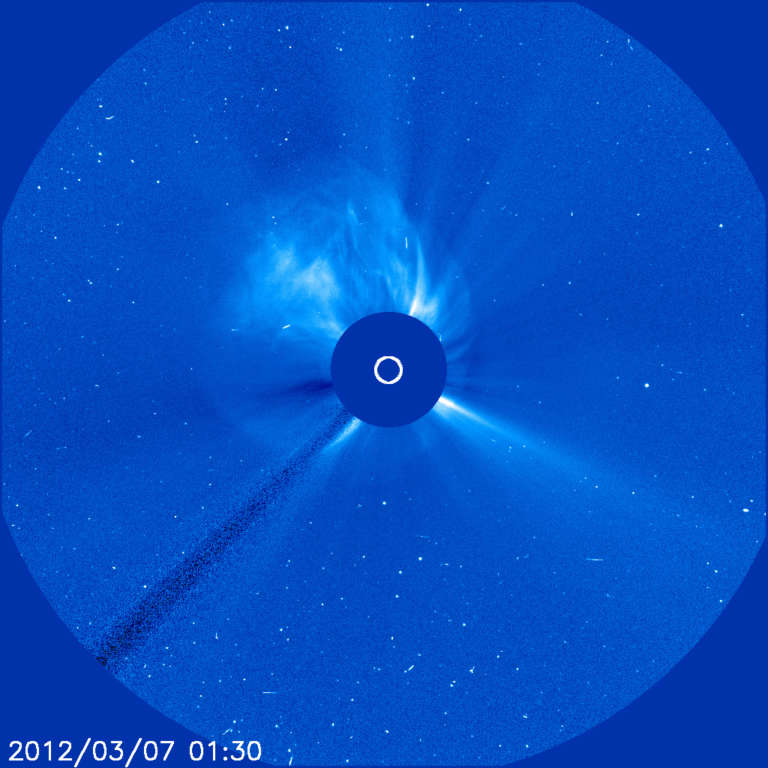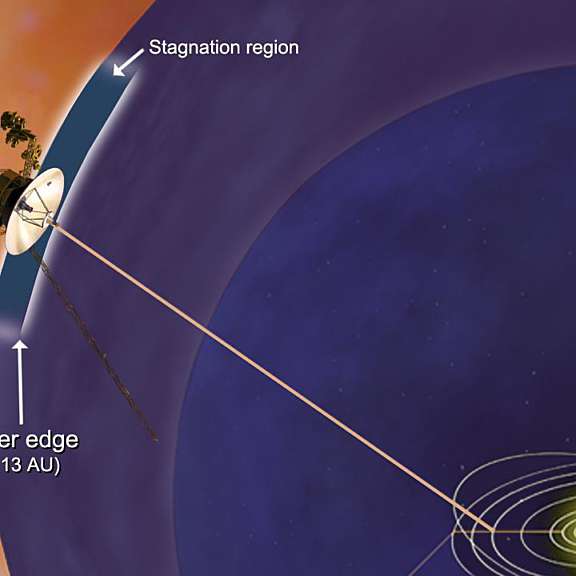All
All
Stories, updates, insights, and original analysis from The Planetary Society.
Should you be worried about solar storms?
As the Sun nears solar maximum, the odds of potentially dangerous solar storms go up. What could one do to Earth?
What Cassini continues to reveal about Saturn
Saturn continues to surprise as scientists comb through 13 years of Cassini data.
News brief: Voyager 2 has passed beyond the heliopause
Voyager 2 is now outside the reach of the solar wind, traveling in the interstellar medium. Unlike Voyager 1, Voyager 2 has a working plasma spectrometer so will be doing exciting new science. It is expected to last another 5 to 10 years, though not with all instruments operating.
Big news from the magnetosphere
At five years and counting, the Van Allen Probes mission continues to reshape our thinking about how Earth’s radiation belts flex and reconfigure under the influence of solar storms.
Go for GOLD, SES-14!
While we can measure properties of these upper layers using ground-based instruments, satellite-borne remote sensing instruments can give us a more frequent, global, and often higher spatial resolution perspective. And that is precisely what NASA’s Global-scale Observations of the Limb and Disk (GOLD) mission will deliver.
Mysterious tides in the Martian atmosphere
Observations made by the Mars Climate Sounder, an instrument aboard NASA’s Mars Reconnaissance Orbiter, have revealed new information about atmospheric tides on the Red Planet.
RBSP to explore decades-old radiation belt mysteries
NASA's Radiation Belt Storm Probes will shed new light on the Van Allen Radiation Belts, a dangerous region of space in our planet's backyard.
Solar storm in progress
Last night the Sun unleashed a large coronal mass ejection in our direction. Here is a compilation of images from SOHO's two LASCO cameras, plus a prediction from the new space weather prediction model that I learned about at the American Geophysical Union in December. The storm will arrive at Earth on March 8.
Solar flares from Skylab
Before automated space observatories like SDO could send pictures and videos of solar phenomenon in real-time, humans had to do it manually, as in the case of the groundbreaking Skylab space station missions, which featured the Apollo Telescope Mount.
The state of Earth observation, January 2012
As of November 2011, the Earth Observing Handbook counts 109 active missions to study the Earth as a planet, with 112 more approved and planned for the future. Jason Davis provides an overview of key current and upcoming earth-observing missions.
Good news, everyone: We're getting as good at space weather forecasts as we are at Earth weather forecasts
Emily reports from the Fall 2011 American Geophyisical Union meeting about advancements in space weather prediction.
From the 2011 Fall Meeting of the American Geophysical Union (AGU): Voyager 1 at the edge of the solar system
A report on a press briefing about Voyager 1 at the Fall 2011 American Geophyisical Union meeting. The spacecraft has entered a new region between our solar system and interstellar space, which scientists are calling the stagnation region.
Report #1 from the New Horizons Science Team Meeting
The New Horizons science team is meeting this week. Ted Stryk was invited to attend the meeting, and he sent the following notes from the first day.
Canto II: Titan's Atmosphere and the Solar Cycle
David Seal explains the complications for Cassini coming from Titan's atmosphere and Solar Cycle.
Space weather affects everyday life on Earth
According to a press release issued this morning by the National Oceanic and Atmospheric Administration, the enormous solar flare that erupted on December 5 and 6 last year was accompanied by an intense radio burst that caused large numbers of Global Positioning System recivers to stop tracking the signal from the orbiting GPS satellites.


 Explore Worlds
Explore Worlds Find Life
Find Life Defend Earth
Defend Earth


 Sun
Sun Mercury
Mercury Venus
Venus Earth
Earth Mars
Mars Jupiter
Jupiter Saturn
Saturn Uranus
Uranus Neptune
Neptune Small Bodies
Small Bodies













